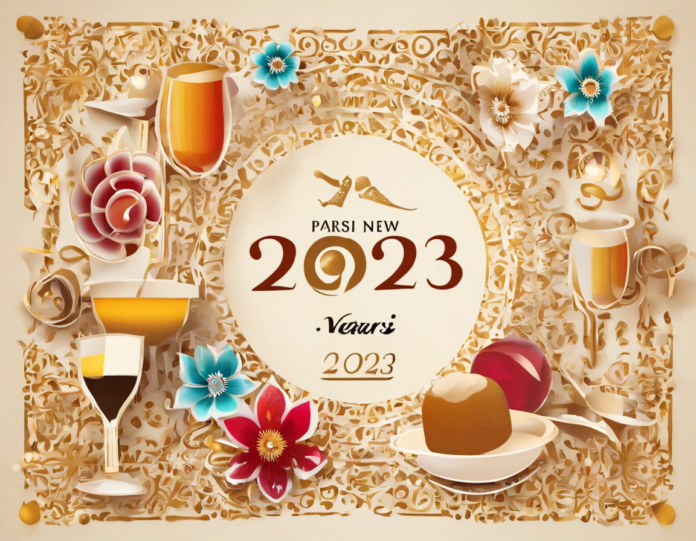Introduction
The Parsi community, also known as Zoroastrians, celebrates their New Year with great enthusiasm and fervor. Known as ‘Navroz’ or ‘Nowruz’, this ancient festival is a time of renewal, reflection, and joy. The Parsi New Year is a unique cultural celebration that holds deep significance within the community. In this comprehensive blog post, we will delve into the origins of Parsi New Year, its cultural traditions, customary rituals, and how it is celebrated across the world.
Origins of Parsi New Year (Navroz)
The Parsi New Year, also known as Navroz, has its roots in the ancient Zoroastrian tradition. Navroz marks the first day of the Persian calendar and signifies the arrival of spring and the revival of nature. The Zoroastrian religion, one of the world’s oldest monotheistic faiths, places great importance on the cycles of nature and the harmony between humans and their environment. Navroz celebrates the spirit of renewal, rebirth, and the triumph of light over darkness.
Significance of Parsi New Year
Navroz holds immense significance for the Parsi community as a day of spiritual renewal and cultural rejuvenation. It symbolizes new beginnings, the victory of good over evil, and the reaffirmation of faith and values. Navroz is a time for introspection, forgiveness, and gratitude for the blessings of the past year. It is a day to seek blessings for the year ahead, to set new goals, and to embark on a fresh journey with optimism and hope.
Customary Traditions and Rituals
Parsi New Year is marked by a variety of customs and rituals that are deeply rooted in the community’s cultural heritage. Some of the customary traditions observed during Navroz include:
1. Jashan Ceremony: The day begins with a special prayer ceremony known as the ‘Jashan’. This ritual involves prayers, hymns, and offerings to honor Ahura Mazda, the supreme deity in Zoroastrianism.
2. Haft Seen Table: A central part of Navroz celebrations is the Haft Seen table, which is adorned with seven symbolic items starting with the Persian letter ‘seen’. These items include sabzeh (sprouted wheat or lentil representing rebirth), samanu (sweet pudding symbolizing affluence), senjed (dried fruit symbolizing love), sir (garlic symbolizing medicine), somāq (sumac berries representing sunrise), serkeh (vinegar symbolizing patience), and seke (coins symbolizing prosperity).
3. Visiting Family and Friends: Navroz is a time for gatherings and socializing with loved ones. It is customary for families to visit each other, exchange gifts, and share festive meals together.
4. Charity and Giving Back: Giving to those in need is an integral part of Navroz traditions. Many Parsi families engage in charitable activities, donations, and community service to mark the occasion.
5. Wearing New Clothes: It is common for people to wear new clothes on Navroz as a symbol of new beginnings and fresh starts.
Celebrations Across the Globe
Parsi New Year is celebrated with great zeal not only in India, where a significant Parsi community resides, but also across the world where Zoroastrians have settled. Countries like Iran, Pakistan, the United States, Canada, and the United Kingdom observe Navroz with various cultural events, feasts, and festivities. Each community adds its own unique touch to the celebrations while maintaining the core traditions and rituals that define Navroz.
FAQs (Frequently Asked Questions)
1. What is the significance of Navroz for the Parsi community?
Navroz is a time of spiritual renewal, cultural reconnection, and new beginnings for the Parsi community. It symbolizes the triumph of good over evil, the arrival of spring, and the renewal of nature.
2. What is the Haft Seen table, and why is it important during Navroz?
The Haft Seen table is adorned with seven symbolic items representing various aspects of life and nature. It is a central part of Navroz celebrations, symbolizing abundance, prosperity, and blessings for the new year.
3. How do Parsis typically celebrate Navroz?
Parsis celebrate Navroz by attending special prayer ceremonies, preparing festive meals, visiting family and friends, giving to charity, wearing new clothes, and participating in cultural events that honor their heritage.
4. Is Navroz only celebrated by the Parsi community?
Navroz is celebrated by various cultures and communities around the world, including Persians, Afghans, Kurds, and others. Each community has its own customs and traditions associated with the festival.
5. What are some traditional dishes eaten during Navroz?
Some traditional dishes enjoyed during Navroz include ravo (sweet semolina pudding), falooda (rose syrup dessert), patra ni machhi (fish wrapped in banana leaves), and sev (sweet vermicelli).
Conclusion
In conclusion, Parsi New Year (Navroz) is a vibrant and joyous festival that brings the Parsi community together to celebrate new beginnings, renewal, and the beauty of nature. From special prayer ceremonies to festive gatherings and traditional rituals, Navroz is a time to reflect on the past year, look forward to the year ahead, and reconnect with cultural roots. The rich traditions, customs, and celebrations of Navroz showcase the unique heritage and spirit of the Parsi community, making it a truly special occasion that is cherished and celebrated with great zeal and fervor.













